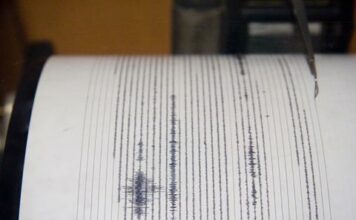Any week now, the state Department of Education will issue its
annual report on the number of school dropouts in California. Note,
the term is no longer
”
high school dropouts
”
– that’s because a lot of kids today leave the education system
long before they ever arrive in high school.
Any week now, the state Department of Education will issue its annual report on the number of school dropouts in California. Note, the term is no longer “high school dropouts” – that’s because a lot of kids today leave the education system long before they ever arrive in high school.
Because of budget cuts that in many places have eliminated things like arts and music programs, busing, child care and some sports teams, state Schools Supt. Tom Torlakson expects the new dropout rate to be higher than last year’s official and already pathetic 21.5 percent, which added up to 89,895 students in the 2008-2009 school year, the last one covered.
That report, however, lowballed the actual number of dropouts by about 15 percent, mostly because it did not include kids leaving middle schools.
Education Department statisticians say at least 7,500 departed at that early age in 2009, an incomplete number because California’s relatively new reporting system only gave access to information about 8th graders that year; it was too new to cover 6th and 7th graders. Seventh grade will probably be included in this year’s report and sixth grade in 2012, when middle schoolers will be included in the overall statistics.
So right off the top, last year’s figures and those to come this year let educators off easy, the real rate of dropouts last year being more like 25 percent than the 21.5 percent reported. This meant about one of every four students who enrolled in middle or high schools in 2005 disappeared from school systems by 2009. It was an improvement over many prior years, not primarily because of anything school districts did. Rather, the improvement was because the modernized reporting system that now assigns a permanent identification number to every child who enrolls anywhere in the state allows better tracking of children whose families move from district to district.
As incomplete as last year’s numbers are, Torlakson considers them a disaster. “It’s a hugely disgraceful rate,” he said in an interview. “And it contributes to our prison population and gangs because all these things are linked together.”
But none of that is the diciest or most political part of the picture. That comes with county schools, as opposed to local ones.
All 58 California counties run little-publicized school systems, mostly for problem pupils. There are schools in juvenile halls and youth camps – it’s difficult to drop out of those. Not so at alternative or continuation schools, often peopled by students expelled from local schools for behavior problems or other troubles, including pregnancy. Credible estimates of the number who disappear from those schools over any four-year period run as high as 85 percent.
These dropouts are included in the overall statewide figure, but not attributed to the districts from which the pupils came. The activist group California Parents for Educational Choice (CPEC) contends many districts expel significant numbers of students they believe will eventually drop out, forcing them into continuation schools, where they are not counted as dropouts from the local system.
Whether or not this is true, the fact that continuation school dropouts are not counted against their local districts makes the dropout numbers for all local districts misleading. How misleading? State figures show fully 42,252 students dropped out of those county-run schools in 2008-9, about 36 percent of all dropouts reported.
So it’s no wonder that whenever the state reveals overall dropout figures, local districts everywhere crow about their “above average” performance. Sure, their numbers are better than the statewide average – they don’t count the problem pupils they’ve previously dumped.
“There’s no reason why we shouldn’t be able to track these kids both by county and by the high schools where they started,” says Torlakson. But that hasn’t yet been done.
Says CPEC President Alan Bonsteel, who has advocated 20 years for accurate reporting of dropout statistics, “As long as the state figures include middle school dropouts and county numbers, but the districts’ numbers don’t, almost everybody gets to look better than average. And as long as everyone thinks this is someone else’s problem, nothing gets done about it.”
Misleading local voters in that way, as almost all school districts do, makes it far easier for school superintendents to hang onto their jobs and for school board members to get reelected. But it seriously downplays the problem. “We need to look at patterns to see how schools and their students do all the way through,” said Torlakson, who has had to concentrate on budget problems more than educational issues since taking office in January.
The bottom line: Any system that helps schools perpetuate a situation where scores of thousands of students drop out yearly, usually condemning themselves to second-class status for life, has to change. One easy change would be to make the numbers for each local district more accurate so parents and voters – no longer misled – would be more likely to agitate for the corrective measures that are plainly needed.












